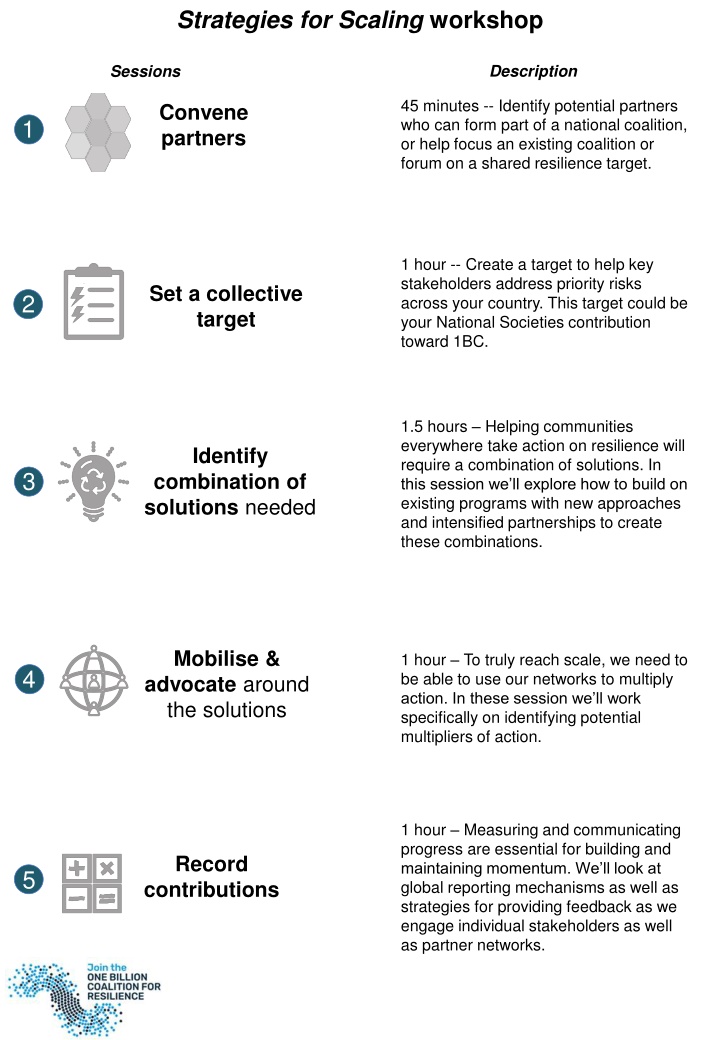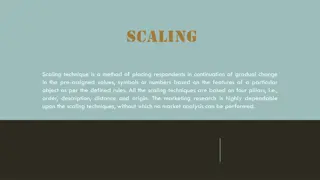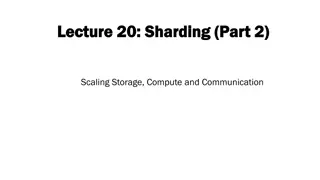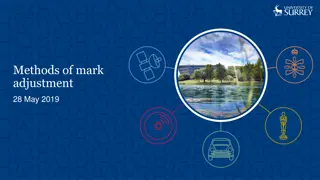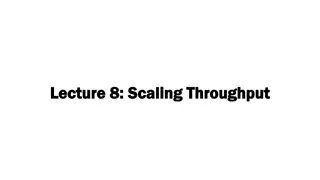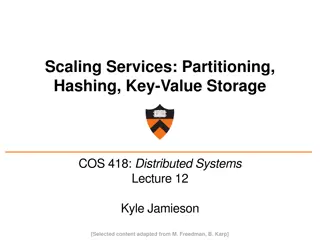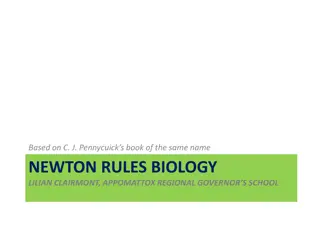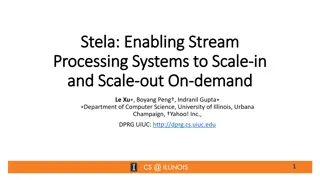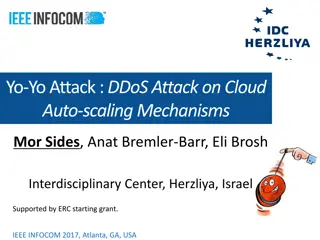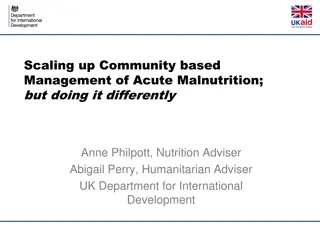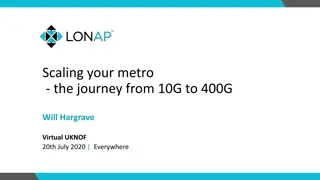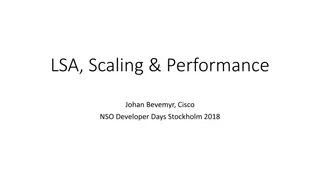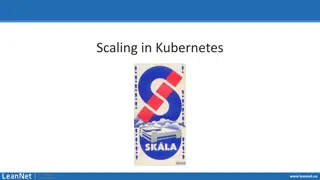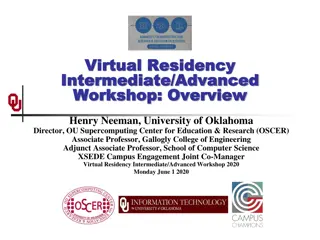Strategies for Scaling workshop
Create collective targets, mobilize partnerships, and identify solutions to address priority risks and promote resilience in communities. Utilize innovative approaches and engage key stakeholders to amplify impact.
Download Presentation

Please find below an Image/Link to download the presentation.
The content on the website is provided AS IS for your information and personal use only. It may not be sold, licensed, or shared on other websites without obtaining consent from the author.If you encounter any issues during the download, it is possible that the publisher has removed the file from their server.
You are allowed to download the files provided on this website for personal or commercial use, subject to the condition that they are used lawfully. All files are the property of their respective owners.
The content on the website is provided AS IS for your information and personal use only. It may not be sold, licensed, or shared on other websites without obtaining consent from the author.
E N D
Presentation Transcript
Strategies for Scaling workshop Description Sessions 45 minutes -- Identify potential partners who can form part of a national coalition, or help focus an existing coalition or forum on a shared resilience target. Convene partners 1 1 hour -- Create a target to help key stakeholders address priority risks across your country. This target could be your National Societies contribution toward 1BC. Set a collective target 2 1.5 hours Helping communities everywhere take action on resilience will require a combination of solutions. In this session we ll explore how to build on existing programs with new approaches and intensified partnerships to create these combinations. Identify combination of solutions needed 3 Mobilise & advocate around the solutions 1 hour To truly reach scale, we need to be able to use our networks to multiply action. In these session we ll work specifically on identifying potential multipliers of action. 4 1 hour Measuring and communicating progress are essential for building and maintaining momentum. We ll look at global reporting mechanisms as well as strategies for providing feedback as we engage individual stakeholders as well as partner networks. Record contributions 5
Set a collective target 2 IBM uses a design concept called Hills to address challenges. According to their process, to write a Hill, start with the user you want to serve. Next, specify the outcome you want to enable them to achieve, and the differentiator that will make your solution worth their while. They refer to these elements as the Who, the What, and the Wow. Examples: Indian national government challenge to Indian Red Cross: To help every secondary school student in Indialearn First Aid by training two teachers in every schools as First Aid Instructors. Tajikistan Red Crescent: To help every school in Tajikistanprovide integrated safety and health content and learning activities by collaborating with the Ministry of Education and other humanitarian and education organizations to build on the Ministry of Education s own services to reach and engage every school and teacher. Philippines Red Cross: To recruit a Red Cross volunteer team in every neighborhood (barangay) district in the Philippinesto provide preparedness and response services as an auxiliary to the barangay local governments. Activity: Think of some potential targets that your National Society could set with partners to address priority risks and reach key stakeholders across your country. This target could be your National Society s primary contribution toward 1BC. Try to express them in the Hills style. Which one do you think is the most feasible and would attract the most partner interest? Mark it with a circle Potential targets: 1) 2) 3)
Convene partners 1 Who are the key partners that would be need to achieve the target and what specific value can they each bring to the coalition? List them in the honeycomb boxes below.
Identify combination of solutions needed 3 Ultimately helping communities everywhere take resilience actions will require a combination of solutions. Use the sheet below to outline different types of solutions will be needed to meet the target you identified in the section #2. Put a next to the solutions that your National Society or partner organizations already have available. Mobilising strategies Technical solutions Enabling capacities Resourcing strategies
Mobilise & advocate around the solutions 4 To reach scale, we need to use our networks fully and create opportunities for our networks, our partners networks, and communities own networks to help multiply reach and action. Fill-in answers for the questions below for each ripple of engagement. objective (and resilience Shared target) organization(s)? networks in our own best use the What can we do to 4 Multiplying factors partners Core partnering Expanded and action? multiply reach networks help organizations or How can partner 3 multiply reach and action? are the target also help How can the people who 1 mobilizing people at scale? for communicating with and What opportunities are there 2 engagement Civic
Record contributions toward 1BC and progress toward targets 5 Measuring and communicating progress are essential for building and maintaining momentum. Here, we look at mechanisms for recording targets and providing feedback as we engage individual stakeholders and partner networks. The 1BC Resilience Mapper is a place where you can record and report on the target you identified earlier in Session #2. In addition, there are often opportunities to recognize and measure progress, in ways that reinforce engagement. Examples: People and communities as multipliers Social media: The IFRC Communications team in Geneva has used Instagram quizzes to test people s knowledge on typhoon preparedness and climate change adaptation. In the Ebola response in the Congo, the Community Engagement and Accountability team has also used social media to survey how widely both true information and myths about Ebola have spread among at-risk populations. SMS messaging: To Tthe IFRC Health team and a variety of National Societies have used SMS-based Community-based Surveillance as a way to collect data from volunteers on health and pandemic risks within their communities. Activity: Think of other ideas or opportunities to measure progress toward your target and its associated resilience outcomes. Are there ways to use the measurement to reinforce engagement? Which ones do you think would be most feasible? Other ideas on ways to measure: 1) 2) 3)
